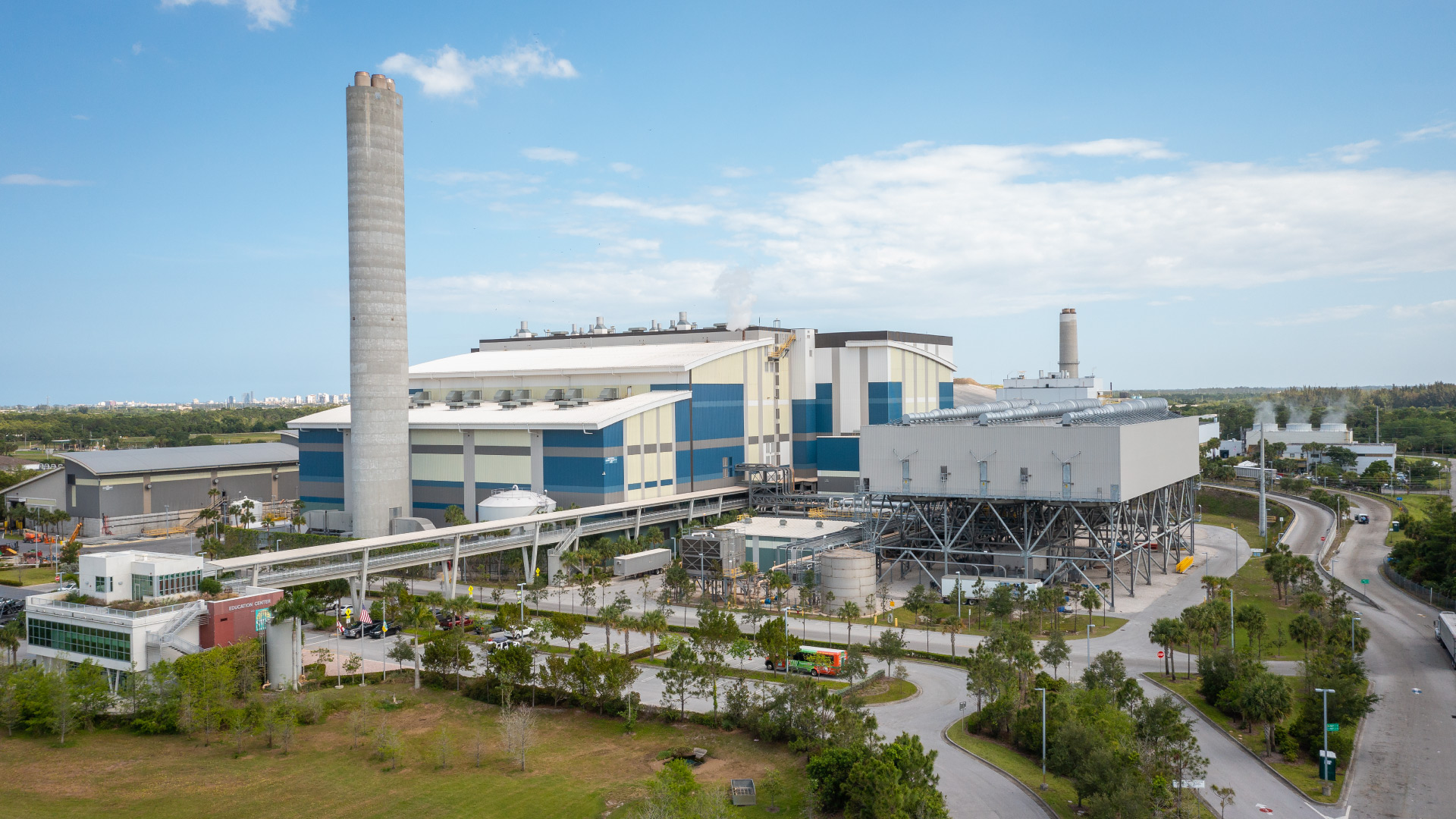When you hear the term “incinerator” what comes to mind? For many in the United States, glimpses of factory-like structures amidst towering plumes of black smoke may paint the imagination. Words like “pollution” or “fumes” may linger at the tip of the tongue. After all, incineration—or Waste-to-Energy, as it’s called today—is a means to manage waste, but at a great environmental cost, right?In fact, the opposite is true. In the United States, much of the concern and misconceptions around Waste-to-Energy are drawn from the industry’s early days—long before stringent environmental regulations and safeguards were put in place. Today, as technology has advanced, Waste-to-Energy incinerators operate much differently from how they did 30 years ago.
How Modern Technology Stacks Up
Waste-to-Energy facilities employ a carefully controlled combustion process with temperatures in excess of 2,000°F and sophisticated air pollution control equipment to ensure that emissions are well below permitted limits and fully protective of human health and the environment. For example, acid gases, like sulfur dioxide, are neutralized using lime in a scrubber reactor. Particulate matter emissions are generally controlled through bag houses, which employ hundreds of fabric filter bags to remove pollutants from the air. All gas produced by combustion must pass through the air pollution control equipment before exiting through the stack.
Throughout this process, operating parameters (such as steam flow and process temperatures) are constantly measured alongside real-time, continuous emission monitoring system data to ensure proper operation and compliance. Emissions are also monitored through periodic testing performed by regulator-approved third parties. Still, what actually comes out of the stack emission-wise?
Insight into the Emissions
To say Waste-to-Energy produces zero emissions is false. Like any process that involves combustion, Waste-to-Energy does produce emissions, but what comes out is a far cry from what the incinerators of old released. Believe it or not, more than 99.9% of what is emitted from the stack consists of normal components of air, including nitrogen, oxygen, and water vapor. The remaining pollutants are highly regulated. With the advanced air pollutant control systems in place, those emissions are well below federal guidelines and permitting thresholds. As an added layer of transparency, many sites report on their annual performance and make their continuous emissions monitoring data publicly available.
What’s more, Waste-to-Energy has been shown to reduce overall net greenhouse gas emissions relative to landfilling. According to a recent academic report, every ton of waste diverted from landfilling and processed in a Waste-to-Energy facility avoids one ton of CO2 equivalent emissions. Conversely, landfills are a significant source of methane, a greenhouse gas that is more than 80 times as potent as CO2 over a 20-year period. The United Nations Environmental Programme, in its 2021 Global Methane Assessment, concluded that reducing methane likely had the greatest potential to decrease global warming over the next 20 years, and called for diversion of biodegradable materials from landfills. Most recently the European Union and the U.S. EPA called out landfills in their commitment to reduce methane emissions.
What’s Next?
Although some continue to have misconceptions of Waste-to-Energy, many parts of the globe have been moving toward incorporating it alongside waste reduction, reuse, and recycling efforts in their efforts to advance more sustainable waste management. Countries like Germany, Austria, the Netherlands and Sweden landfill very little of their waste, relying instead on integrated systems that utilize aggressive recycling practices, supplemented with Waste-to-Energy for what remains. The U.S. EPA observed that nearly 40% of U.S. greenhouse gas emissions are related to how we manage materials, including at their end of life. It’s time we meet the challenge to reduce these emissions with all available tools, including waste reduction, recycling, composting and Waste-to-Energy.
For more on Waste-to-Energy and the science behind it, be sure to visit our Waste-to-Energy site page.

.png?width=288&height=66&name=COVANTA%20without%20tagline%20(1).png)



